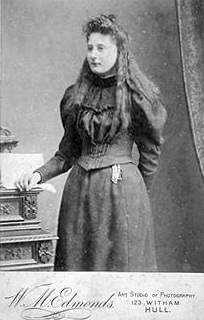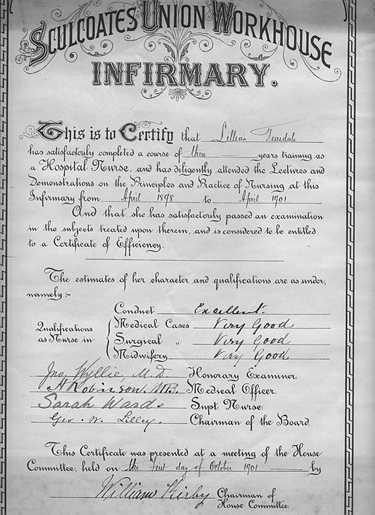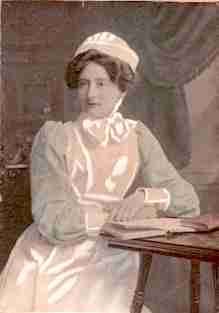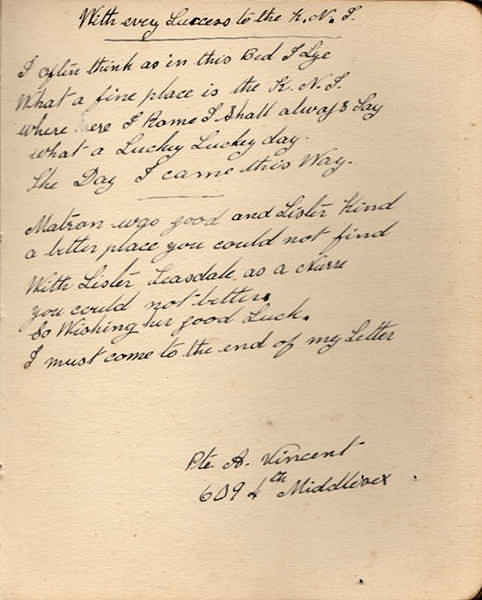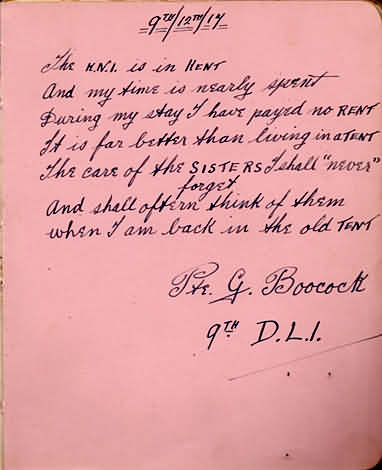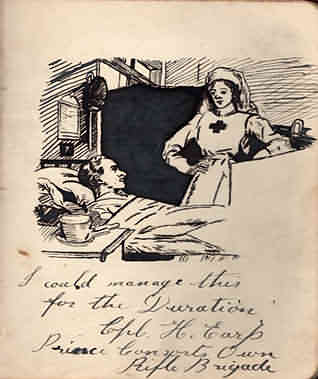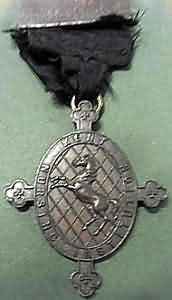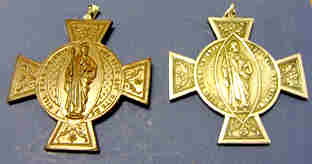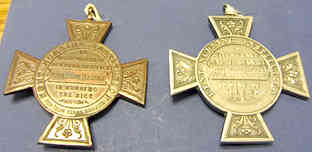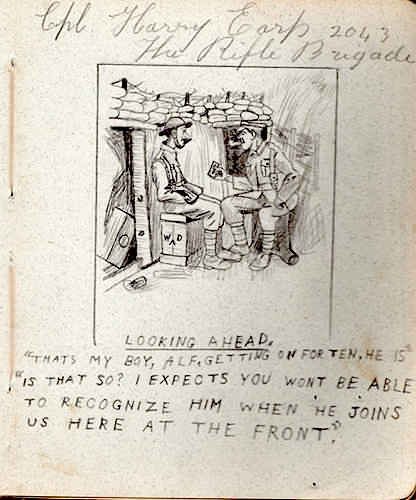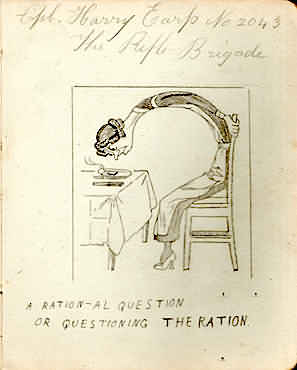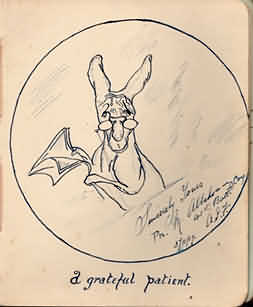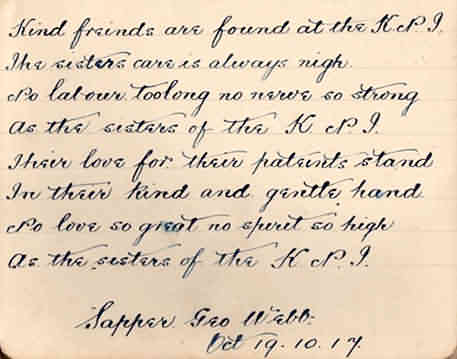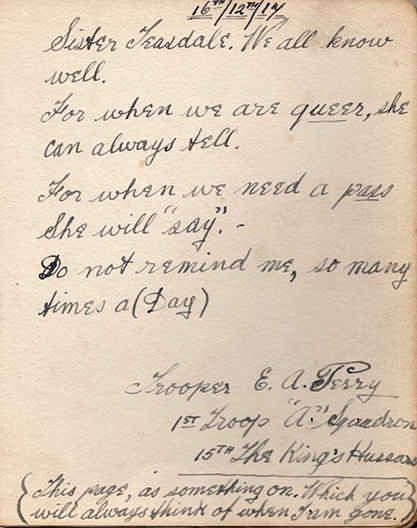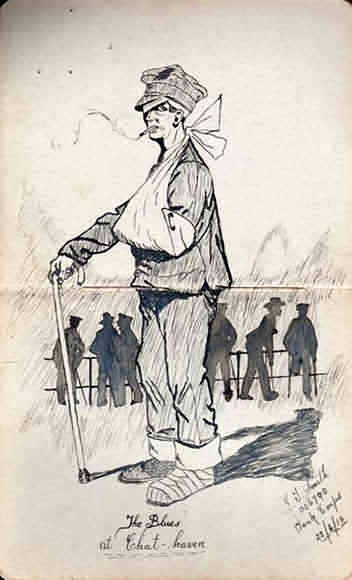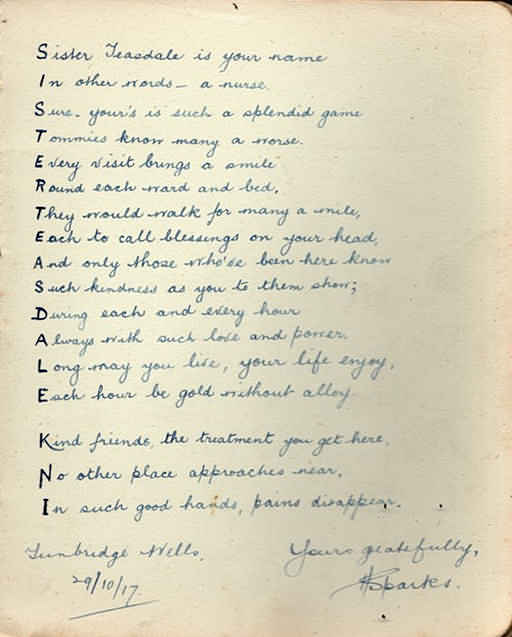|
Collecting Nursing History 26 Nurse Lilian Teasdale (1877-1969). Sarah Rogers. |
 |
Please Note: Whilst every care is taken in checking promoted links, we cannot accept responsibility for your use of third party web links. | ||||||||||||||||||||||||||||||
Lilian Teasdale first came to my attention when I saw her nurses badges - a bronze medal for 4 years service and silver medal for 8 years service, both from Kent Nursing Institute.
Lilian as a
younger woman, possibly before her training in 1898 Lilian was born on 1st November 1877 in the small village of Preston, Yorkshire. She was the second child of ten born to a farmer, Joseph Shillitoe Teasdale and Elizabeth Canham. In 1901 she is shown on the 1901 census as an officer of Sculcoates Union Workhouse, Hull, working as an Assistant Nurse. The certificate, still kept within the family shows her training here from 1898-1901.
(2) Lilian's Certificate from Sculcoates Union Workhouse,1898-1901 A great Niece of hers has provided invaluable background information: "She moved down to Tunbridge Wells and surrounding area where she met her husband to be, Walter A Donald Kirk (who she married in 1919), who was an architect and became Private Secretary to Earl de La Warr (so have letters etc from Earl de la Warr to Walter). Lilian mentioned lots of great houses such as Penshurst Place, Groombridge Place, Buckhurst, Old Buckhurst and Knole" Lilian is found in records from Sevenoaks Poor Law Union * the superannuation service register as having worked for 3 months as Assistant nurse at Hereford Union -from November 21st 1901 until 21st February 1902, then she transfers to Sevenoaks Poor Law Union Infirmary (actually in a nearby village, Sundridge );as being an assistant nurse there from 21 February 1902 until 10th October 1908 -no more detail is given about her movements As an assistant Nurse in the Infirmary attached to the Poor Law Union she received £30 /annum, with emoluments of ; "rations, Washing ,Lodging ,Uniform -value of £50 " (14) It is presumably after this that Lilian transfers to the Kent Nursing Institute in Tunbridge Wells, where it is thought she worked until her marriage in 1918( and fits with her receiving long service medals for 4 and 8 years from the Institute.
(3)
A colour photo of Lilian in the uniform of the Kent Nursing
Institute c 1911-1919
(12) In 1903 the Kent Nursing Institute is still at 11 Crescent Road, Miss Mottram is the superintendent now – after this year the building is recorded as Tunbridge Wells District Nursing Association (Queen Victoria Memorial Home).(2) During the period of 1911-1919 it is referred to as the Tunbridge Wells District Nursing Association and there are no other records for a Kent Nursing Institute that can be found, beyond 1903 when the name of the building changes. It could be that the name changed but the building itself remained part of the Kent Nursing Institute as a Tunbridge Wells branch.
(13) (14)
(4)
Kent Nursing Institute
Medal- "Tunbridge wells Branch" engraved on bar (no makers marks).
Burdett's (8) 1905 issue lists Kent Nursing Institute as being established in 1875 as a private nursing service,(such as established by Eva Luckes at the London hospital in January 1886 in part to raise much needed income for the London Hospital) but also doing charitable work. Funding would be via charitable donations, regular subscriptions and one off payments for care as required. "From 1877, Queen Victoria's Jubilee Institute (later the Queens Nursing Institute became the central post -qualification district nurse training and distribution point for district nurses across England and Wales. District Nursing Associations such as the Kent Nursing Institution would affiliate the QVIJN who would then provide professional oversight of their work though an area superintendent and with regular inspections. "(9) Kent Nursing Institute also appears to have inpatient beds also. It is recorded as an Auxiliary Hospital during WW1 with 32 beds for soldiers plus civilian beds. (10)
In records held by the Queens Nursing Institute Kent Nursing Institute and Tunbridge Wells District Nursing association are not listed as being affiliated to the Kent County Nursing Association, so they were probably independent. The National Archives hold documents which show the formal affiliation of the Kent County Nursing association to the Queens Nursing Institute in 1907.(12-13) It may be that there are records still held privately for the Kent Nursing Institute. Four references to the Kent Nursing Institute are found in the Nursing press; in July 1900, Miss M. Russell, had been appointed at a hospital in Stroud, and had formerly been Asst Superintendant at the Kent Nursing Institute(4). In 1901 and 1904 Miss Shepherd of the Kent Nursing Institute is one a several nurses who sent in correct competition entries to the months Guinea Prize.(5, 6) In 1913 the British Journal of nursing reports that "Nurse Robinson has resigned from the Kent Nursing Institute after twenty-three years faithful service and excellent work... the Committee record her great devotion to duty"(7) On the 1911 census Lilian is shown living at 51 Frant Road, Tunbridge Wells working as a sick nurse for a Mr William Woodward Rawes, aged 69, who is listed as married , his occupation as "Military, retired Lieutenant Colonel". His probable wife a Mrs Rawes is shown in Kelly's directories as living there, but appears to be away on census night. Lilian received letters from her fiancé Walter Kirk which help add detail to her life in Kent as a District Nurse before they were married. From Walter's letters she appears to have been nursing in 1912 in Felbridge near East Grinstead. In Horsmonden, (Sussex- just outside Tunbridge Wells) she apparently had a bad experience! In late 1918/early1919 Walter sent several letters sent to the Wellington Hotel, Tunbridge Wells care of Mrs Bowman, where Walter asks how Lilian is coping with the 'mad husband'! What safety checks were in place before these nurses like Lilian were sent out to live and work in homes on their own? When she was nursing in Burwash(Sussex) he sent the letter via the Kent Nursing Institute (based in Tunbridge Wells). Another one sent via the Institute gives the Institute's address as Mount Sion, Tonbridge Wells-suggesting that the Institute moves after the 1911 census. One letter was sent to Thames Ditton- outside Surbiton, Surrey-much further afield than the usual locations that Lilian was sent to. Her Great Niece recalls an anecdote that she often told "When she attended a woman about to give birth to her 19th child, Aunty was horrified and said in her adopted 'upper class' southern accent "Oh my dear, how DO you do it"? To which the woman replied "When you've ad this many its now't but havin a good fart" !!!! Telling the tale always made Aunty laugh."(1) The family recall Lilian mentioning many famous houses around Tunbridge Wells, including Knole, Penshurst Place and Buckhurst, what is not known is in what capacity, was it with Walter as her fiancé ; or as a nurse? As yet it has not been possible to research this any further. Another theory is that Lilian with her colleagues were taken on tours of private houses, as were the nurses and staff from the Ontario Military Hospital ,Orpington.
"Not a war or medical book at all, but an account of
a tour around some of Kent’s great houses. Tours were organised by
the author, a resident of Sevenoaks, for medical and nursing staff
of the hospital, and the book produced to serve as a permanent
reminder. " (11)
It is thought that Lilian may well have worked in a Military
Hospital in the area during WW1. Her family had an autograph book,
typical of those found from the period, containing thoughts and
sketches by her patients, including a "portrait" of her, which
bear testament to the fact that she was loved and respected by the
injured soldiers she nursed in Kent during WW1.(1) Lilian
also appears to have worked at Sundridge Infirmary in 1908 (attached to the Sevenoaks Poor Law Union Workhouse, several miles
outside Sevenoaks), as there is also a reference in the book from a
patient Lilian nursed there.
This is one of three autographs by this Soldier in Lilians book, and one which uses the initials K.P.I. / K.N.I. (it is hard to decipher, if it is K.P.I. this appears to be Kingswood Park Infirmary/Hospital, Tunbridge Wells which is also listed as an auxiliary hospital - and was only about one mile from the K.N.I: Lilian might have been loaned to work there during the war.) (10)
Lilian may also have worked in Chatham, or the soldier who drew this sketch below returned to England via Chatham Dockyard (an active naval yard in Kent until the 1980's, approximately 26 miles from Tunbridge Wells).
Lilian finally married, aged 41 years, Walter Kirk in 1919 (within Tonbridge registration district). Sadly Walter died only 2 years later in Kent in 1921, aged only 51 years, with Lilian a widow and without any children. It is not known whether Lilian worked after Walter's death, only that she moved to Hull where she bought a house and looked after her elderly mother. " I am intrigued to find she went on a cruise P&O SS Moldavia around the Mediterranean in July 1932." (1) However, none of the names of her fellow passengers mean anything to her relatives. "She then looked after her aging mother and after her mother's death (in 1940) she spent the last 25 years of her life living with my family (my father was her nephew). We had a big old house and she had her own living room and bedroom. When I was a child I used to go into Aunty Lilian's living room and lie on her Chesterfield Sofa and she used to mop my brow, take my pulse and pretend to nurse me. She never advocated the use of tablets! I would like to add that she was a very genteel, kind and lovely woman." (1) The family still have her nursing apron, and a nursing cup, along with some of her books,(including on how to use leeches, now back in use on specific occasions) but the medals appear to have been sold on at some point.
(11) Sevenoaks Poor Law Union/Workhouse and Sundridge Infirmary Sevenoaks Poor Law Union officially commenced on 14th April 1835. It was overseen by a Board of 19 Guardians, elected to represent its 10 constituent parishes.The Poor Law Commissioners suggested that the new Sevenoaks Guardians build a new workhouse to accommodate the union's paupers. It was decided instead to alter and enlarge the existing Sevenoaks parish workhouse on St John's Hill in Sevenoaks. "In the winter of 1840-41, the number admitted to the workhouse exceeded what the Commissioners felt acceptable for the "health and comfort of the inmates". Children in the workhouse were also found to be suffering from "certain glandular affections"."(15) Following an official inspection of the St John's Hill workhouse In December 1841 carried out on behalf of the Poor Law Commissioners. The subsequent report exposing massive overcrowding-which contributed to the ill health of the inhabitants.
In 1843 the new Sevenoaks
Union workhouse was built at Sundridge (4.5 miles from Sevenoaks off
the main road (now A25) up a country lane . It was a large purpose
built T-shaped main building, three storeys high. The rear wing
contained the workhouse dining hall with a separate infirmary at the
north of the main building. The workhouse was later renamed
Sundridge Institution and later with the establishment of the NHS in
1948 it became Sundridge Hospital- nursing patients with mental
health issues . With the advent of "care in the community" -and a
subsequent change in mental health provision it was closed in the
late 1990s. For some years a bungalow in the grounds was used by
the Sundridge District Nursing team as their base until space was
created in the local surgery. Sundridge Hospital buildings have now
been refurbished for residential use.(15) References 1. Barbara Wood, Great Neice 2. Kelly's Directory of Tunbridge Wells 3. Queens Nursing Institute. London. 4. http://rcnarchive.rcn.org.uk/data The Nursing Record and Hospital world July 7, 1900 pg 7 5. http://rcnarchive.rcn.org.uk/data The Nursing Record and Hospital world July 6 1901 pg8 6. http://rcnarchive.rcn.org.uk/data The British Journal of Nursing September 3rd 1904 pg 188 7. http://rcnarchive.rcn.org.uk/data The British Journal of Nursing February 22 1913 pg 150 8.1896-1927 Burdett's Hospitals and Charities, editor Sir Henry Burdett 9.RCN Archivist, 2013. 10. http://www.scarletfinders.co.uk 11. http://www.gilliesarchives.org.uk 12. ©-The National Archives Kew-PRO 30/63/168 13. ©The National Archives Kew -PRO 30/63/187 14. © Kent History centre, Maidstone-Sundridge Infirmary Superannuation Register CKS-G/SE AOR2
15.
http://www.workhouses.org.uk/Sevenoaks Illustrations 1,2,3. By kind permission of Barbara Woods 4, 5, 6. Private Collection.
7-16, Private Collection Acknowledgements Barbara Wood, Lilians Great Neice Kate Tyson, Customer Support Assistant, Libraries, Registration & Archives, Kent CC Q.N.I. Kent History Centre Rcn Archivists Harry for driving me around, helping with photos etc ..thank you . © Sarah Rogers 26/04/2013 |
SECTION
1 Schools of Nursing. SECTION 2 |
|||||||||||||||||||||||||||||||
| Home Schools Region Forum Collecting Galleries History Bibliography News Archive Contact |
